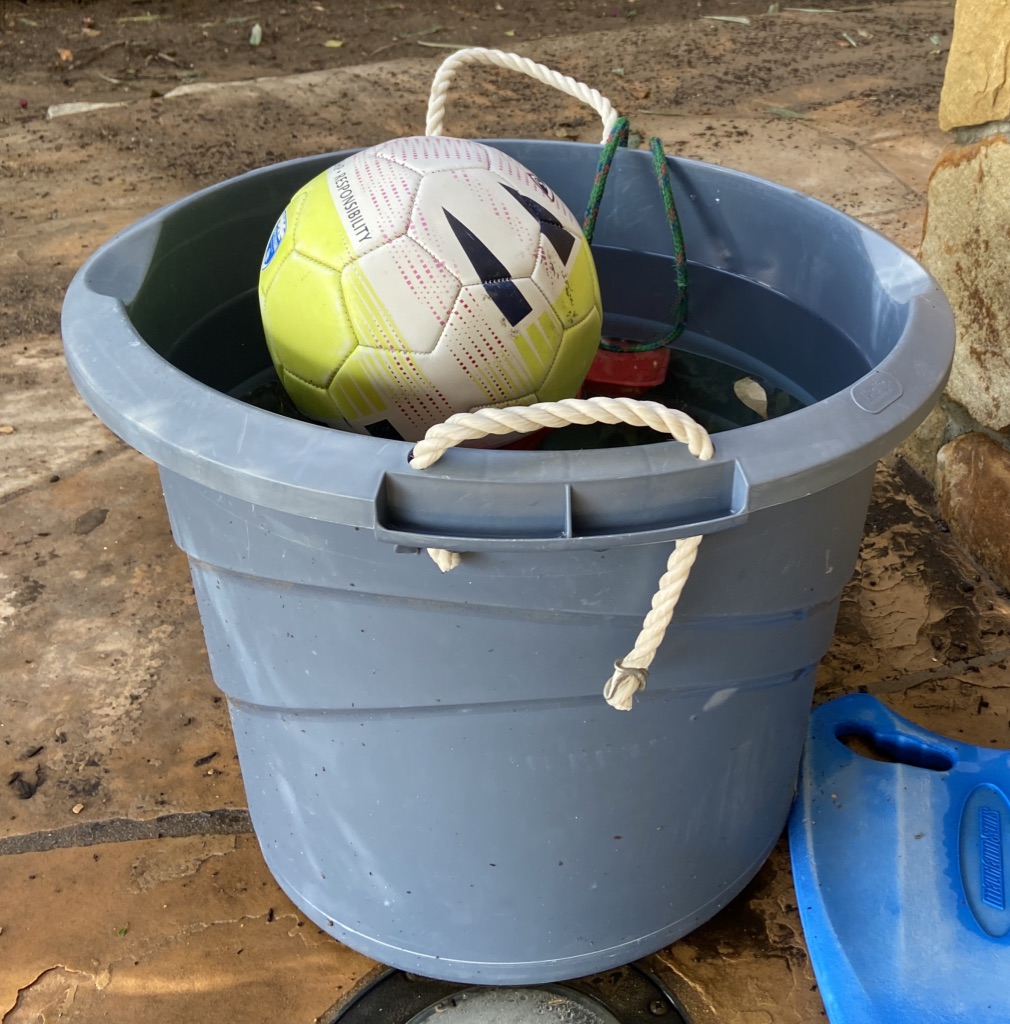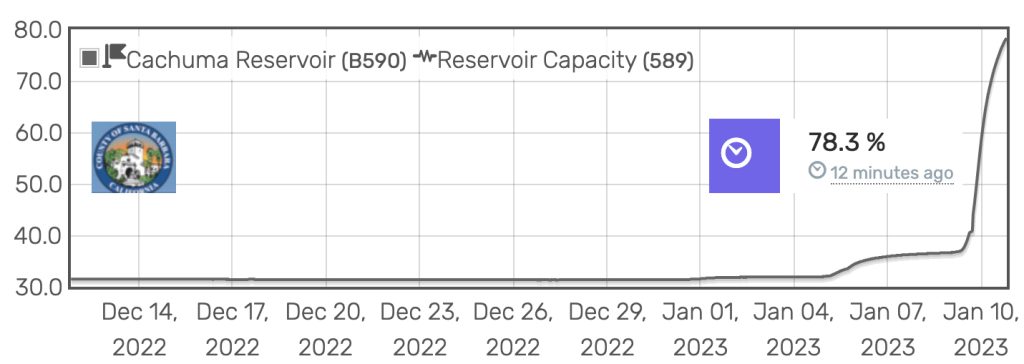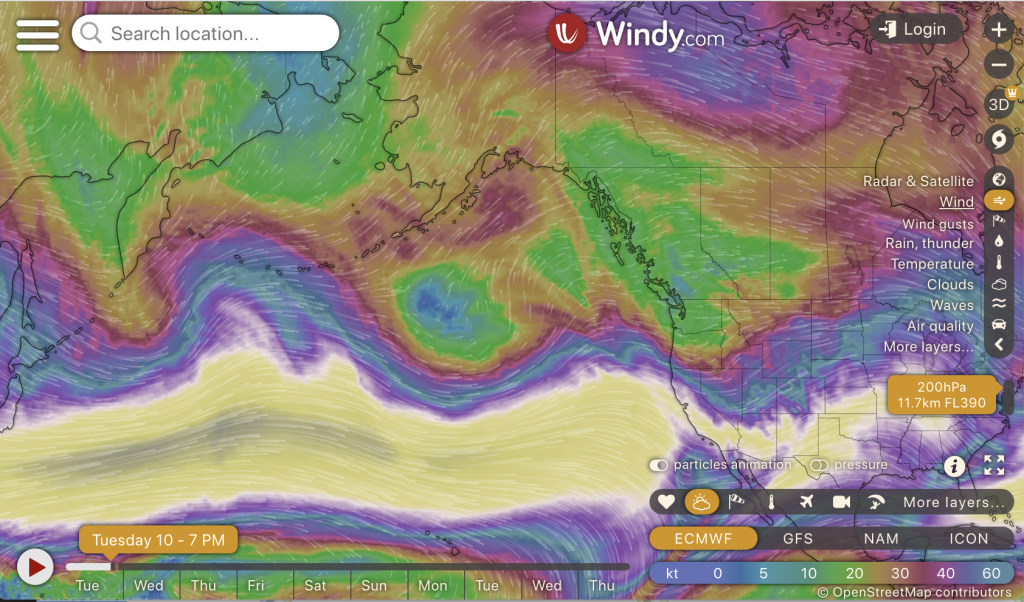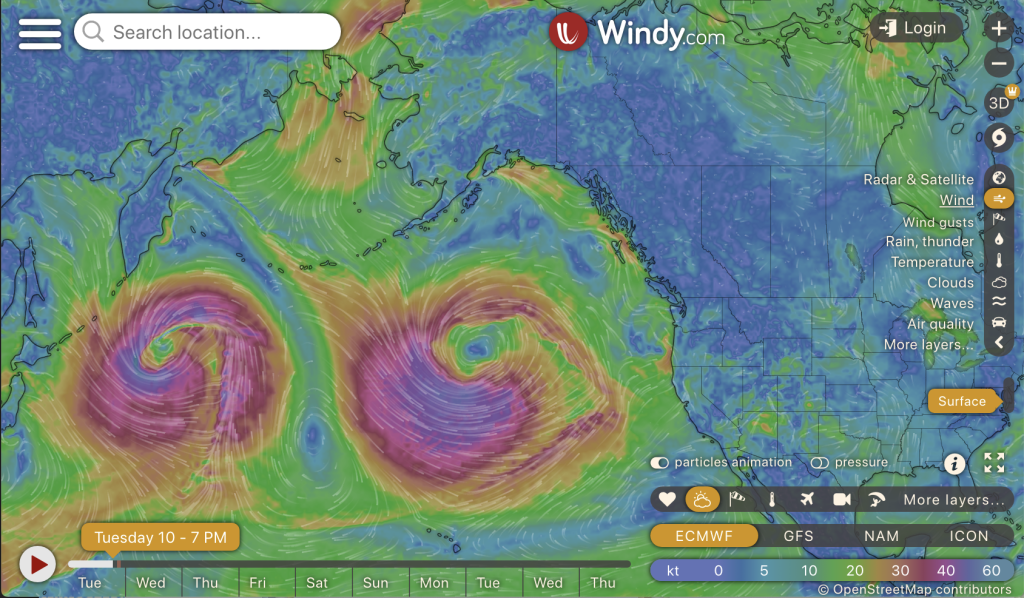Most of California has just two seasons: rain and fire. Rain is another name for Winter, and it peaks in January. In most years, January in California isn’t any more wet than, say, New York, Miami or Chicago. But every few years California gets monsoons. Big ones. This is one of those years.
The eighteen gallon storage tub in our yard is sixteen inches deep and serves as a rain gauge:

Yesterday morning it was less than half full. While it gathered rain, our devices blasted out alerts with instructions like this:

So we stayed home and watched the Web tell us how the drought was ending:
Wasn’t long ago that Lake Cachuna was at 7%.
So that’s good news. The bad news is about floods, ruined piers and wharfs, downed trees, power outages, levee breaches. The usual.
It should help to remember that the geology on both coasts is temporary and improvisational. The East Coast south of New England and Long Island (where coastal landforms were mostly dumped there or scraped bare by glaciers in the geologic yesterday) is a stretch of barrier islands that are essentially dunes shifted by storms. Same goes for the Gulf Coast. The West Coast looks more solid, with hills and mountains directly facing the sea. But Pacific storms in Winter routinely feature waves high as houses, pounding against the shores and sea cliffs.
Looking up the coast from Tijuana, within a few hundred years Coronado and Point Loma in San Diego, La Jolla, all the clifftop towns up the coast to Dana Point and Laguna, Palos Verdes Peninsula, Malibu and Point Dume, Carpinteria, the Santa Barbara Mesa and Hope Ranch, all of Isla Vista and UCSB, Pismo and Avila Beaches, all of Big Sur and the Pacific Coast Highway there, Carmel and the Monterey Peninsula, Aptos, Capitola and Santa Cruz, Davenport, Half Moon Bay, Pacifica, the headlands of San Francisco, Muir and Stimson Beaches and Bolinas in Marin, Fort Bragg in Mendicino County, and Crescent City in Humbolt—all in California—will be eaten away partially or entirely by weather and waves. Earthquakes will also weigh in.
The photo up top is of La Conchita, a stupidly located town on the South Coast, west of Ventura, four days after a landslide in 2005 took out 13 homes and killed 10 people. All the land above town is a pile of former and future landslides, sure to slide again when the ground is saturated with water. Such as now or soon.
So that’s a long view. For one that spans the next week, visit windy.com and slide the elevation up to FL (flight level) 340 (34000 feet):
That yellow river of wind is a jet stream hauling serious ass straight across the Pacific and into California. Jet streams are why the headwinds and tailwinds you see on seat-back displays showing flight progress on planes often say 100mph or more. Look at Windy before you fly coast to coast or overseas, and you can guess what the flight path will be. You can also see why it may take as little as five hours to get from Dulles to Heathrow, or more than seven hours to come back by a route that touches the Arctic Circle. Your plane is riding, fighting or circumventing high altitude winds that have huge influences on the weather below.
To see how, drop Windy down to the surface:
Those eddies alongside the jet stream are low pressure centers full of the moisture and wind we call storms. They spin along the sides of the jet stream the way dust devils twist up along the sides of highways full of passing trucks. Those two storm centers are spinning toward California and will bring more wind and rain.
Beside the sure damage those will bring, there will be two benefits. One is that California will be as green as Ireland for a few months. The other is that wildflowers will bloom all over the place.
The Death Valley folks are hedging their bet, but I’d put money on a nice bloom this Spring. Watch for it.
Bonus link: There’s An Underground City Beneath Sacramento In Northern California That Most People Don’t Know About. Excerpt: “…Old Sacramento was built up during the time of the gold rush, but the frequent flooding of this area obliterated its first level time and time again, until finally, the city abandoned that level altogether. It’s both fascinating and creepy to tour the abandoned level…”




Leave a Reply